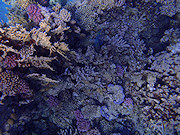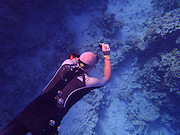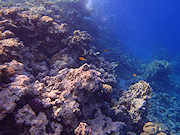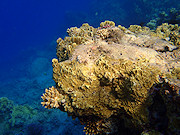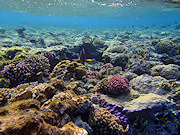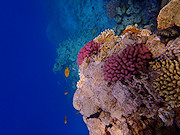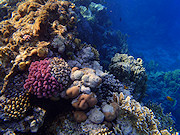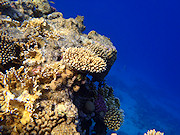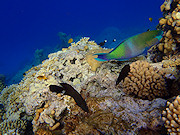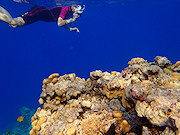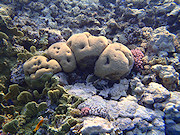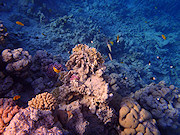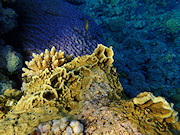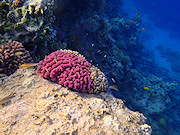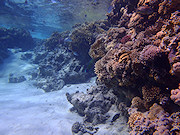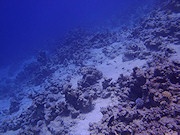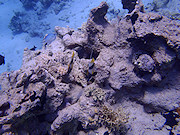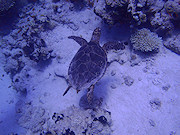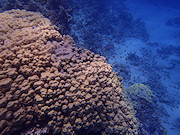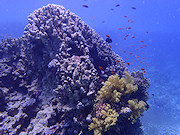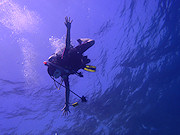Underwater cameras test 2011
3. Olympus Tough TG-810
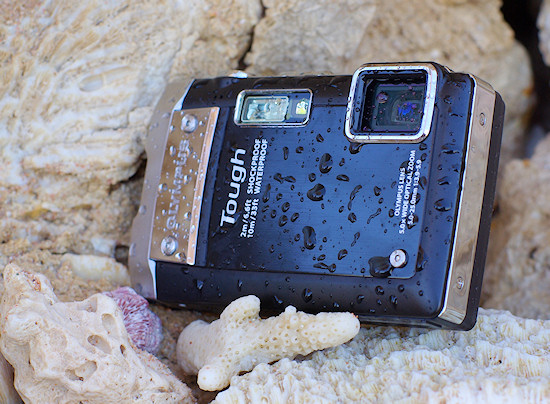 |
The Olympus company refreshes its underwater cameras series every year. It used to be marked with SW letters, then it was renamed as mju-Tough and now it is called Tough TG. This year the following models were added to the series: the TG-310, the TG-610 and the TG-810 which took place of mju-TOUGH 3000, mju-TOUGH 6200 and mju-TOUGH 8010 respectively. A specification comparison between the TG-810 and its predecessors shows quite clearly that the producer focused rather on refining the earlier constructions than on introducing any revolutionary changes. As a result on 2 March current year a new camera was presented but with the same sensor and optics as used in the mju-TOUGH 8010. One thing that sticks out is a completely new HyperCrystal III LCD screen with the diameter increased to 3 inches and the resolution of 920K points. The new model also features a 3D photos mode and several so-called Magic Art filters as well as the SDXC memory cards support.
Endurance parameters of the casing didn’t change – the device still can be submersed up to 10 meters, should survive a 2 m fall and a pressure of up to 100 kg. Despite that the body is a bit bigger (measuring currently 100.2×64.5×26 mm) and heavier by more than a dozen of grams. Most probably it was caused by installing a GPS receiver and a compass in the camera.
It seems a new image processor was used in the TG-810 as well because the burst mode speed increased to 0.6 fps compared to 0.3 fps, offered by the mju-TOUGH 8010, so now it is twice as fast. It pleased us a lot because last year we complained a lot about the work speed of the older model.
Please Support UsIf you enjoy our reviews and articles, and you want us to continue our work please, support our website by donating through PayPal. The funds are going to be used for paying our editorial team, renting servers, and equipping our testing studio; only that way we will be able to continue providing you interesting content for free. |
- - - - - - - - - - - - - - - - - - - - - - - - - - - - - - - - - - - - - - - - - - - - - - - -
Design and build quality
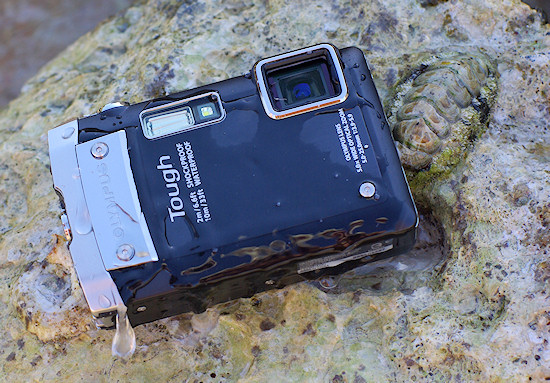 |
The build quality of water- and shockproof Olympus cameras has been beyond reproach for years. The TG-810 is not an exception to this rule – its construction is solid and compact, made of high quality materials. As a result the producer is offering a robust, well-made camera with no slacks or ill-fitting elements. The tested model is quite heavy, though, but in the case of underwater cameras it can be actually an advantage – when we are swimming or diving we can feel it still attached to our wrist.
The protective window of the LCD screen deserves our praise. It withstood valiantly the pressure of 2 atmospheres at the depth of 10 m and although it did bend a bit, it was still hard and stiff enough not to touch the screen. It might seem nothing special now but next chapters will show that other producers neglected that topic a bit too much.
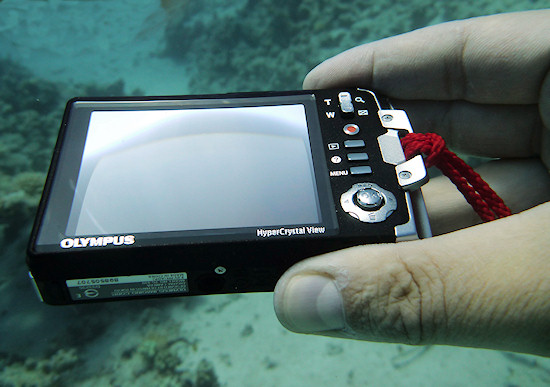 At the depth of 10 m the pressure of the water column is twice as big as the pressure of air on the surface. It puts pressure on the protective window of the LCD screen so it bends inside. |
As it was the case of the previous model, all ports in the TG-810 are hidden under a big plate which occupies the whole side panel. We can find there a battery, a memory card slot, an USB port and an HDMI port.
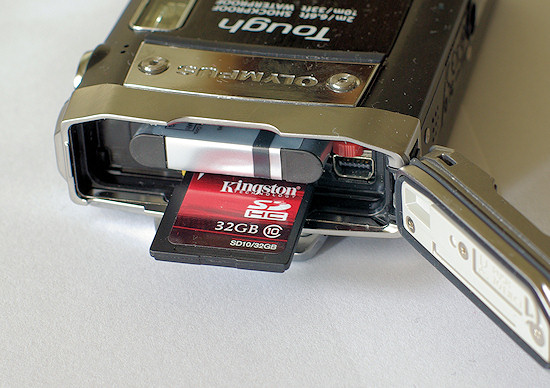 |
The cover itself is not very comfortable to use; it is protected against an accidental opening by a little revolving lever which activates the blockade.
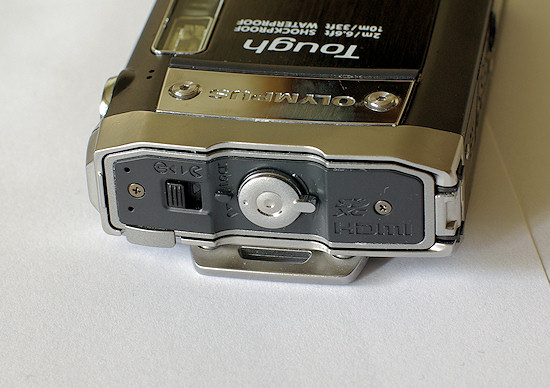 |
Although the TG-810 resembles its older brother from the front, on the black panel a small revolution took place. The producer decided to use a big, 3-inch LCD screed and such a move forced redesigning the layout of controllers, situated on the back. The most important change is replacing four-way controllers by a small joystick which can be even pressed down to approve chosen options. Apart from navigating the menu it also allows to delete pictures in the playback mode and a swift change of info displayed on the screen. Because of that big monitor the zooming lever and other buttons had to be set vertically.
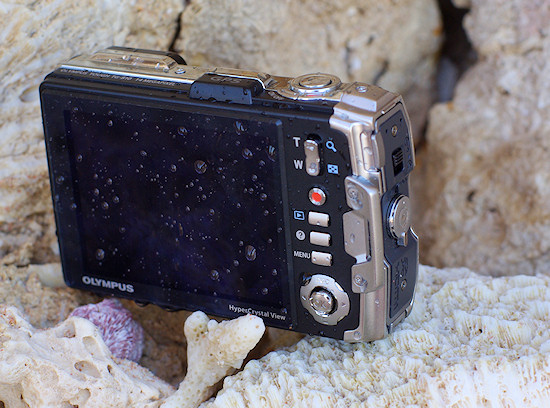 |
Under the lever you can find one by one: a video mode button, a playback button, a help button and a MENU button which, fortunately, this time (so contrary to the mju-TOUGH 8010) serves the purpose it is supposed to serve– it starts the main menu of the camera.
The back panel lacks a little loudspeaker this time, which was moved to the bottom; it is situated next to the nearly centrally positioned tripod thread.
The list of controllers can be ended by a shutter release and a small ON/OFF button which partially surrounds it.
Use, cleaning, wear and tear
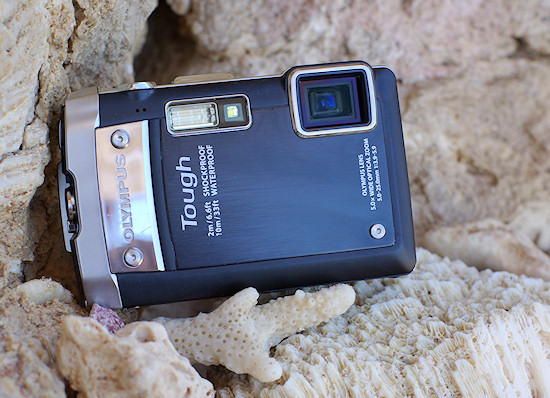 |
One week of an intense use of the Olympus TG-810 didn’t leave any wear and tear marks on it. Despite taking almost one thousand photos during numerous trips to the beach, snorkeling and scuba-diving the camera was left scratch-free. Only on the LCD screen you can notice some grooves but they are very shallow and practically invisible in every day usage.
Fortunately the producer finally stopped installing the front panel made of a material similar to Plexiglass, present in older models. Instead we get an aluminum insertion which is definitely easier to clean. Unfortunately cleaning remains still very labour-intensive, especially if you don’t give the camera s rinse using fresh water right after coming out of the sea. It would be difficult to count all the nooks and crannies where the salt can be cumulated and the picture below can be the proof of it – you can easily notice salt residues in different cracks which remained there for several days.
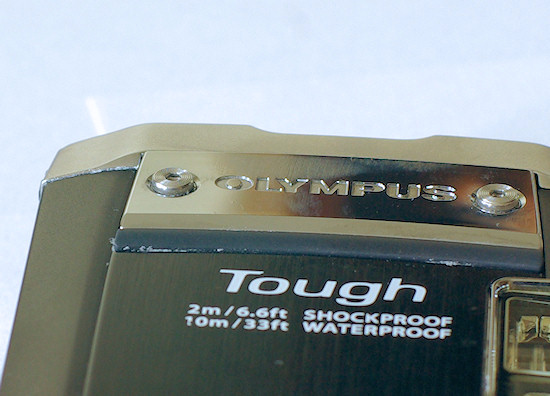 |
Traditionally we must carp about the metal cover protecting the lens, the same as in earlier models. Not only it snaps irritably when you switch the camera on and off (as always, we must add, nothing changed here) but also tiny grains of beach sand can block it very efficiently; you end up digging with a needle or a pin around to make the camera workable again. The mere idea of a protective cover for a lens doesn’t seem the best in a case of an underwater camera anyway because after diving you must dry it kind of twice. It often happened that when we wanted to take some dry land photos we found out that under that cover there were still drops of water left on the lens. That’s why you must remember to dry the camera not only switched on (with the cover tilted a bit) but also switched off. Unless you want to keep a soft cloth by your side all the time to wipe the lens out.
Additional functions
The users of the TG-810 won’t complain about the lack of additional functions. Their list is really impressive – the camera offers a 3D photo mode, an automatic panorama mode, a manometer, a compass, a depth gauge/altimeter and a built-in GPS, mentioned earlier.Undoubtedly the depth gauge will be the most useful addition to underwater photography as it can indicate very precisely how many meters under surface we currently are. We compared the value it displayed with that stated by our dive computer – it turned out the device in the camera worked perfectly well. The biggest difference we managed to find amounted to 0.5 m but it rather stemmed from the approximation because the measurement is taken to an accuracy of exactly 0.5 m. Most often the values differed in about 20-30 cm.
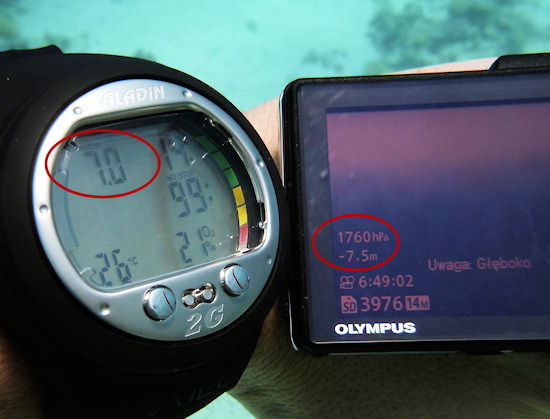 |
The usefulness of an inbuilt depth gauge is simply priceless. Taking photos we often forget about depth control on our diving equipment. Here a depth value is always visible on the LCD screen and additionally, up from 7m, we get an alert “Attention: Deep”.
The next feature, very useful under water, is the possibility of taking panoramic photos. Unfortunately In-Camera panorama mode of the Olympus works similarly as in the Fujifilm XP30 but the whole putting together of a picture takes almost twice as long. Apart from that the camera needs a nice, wide scene - don’t count on a successful panoramic photo of your own room. Under water everything changes very quickly, though, too quickly to create a good panoramic photo of, say, a coral reef. On the dry land we sometimes manage to get a satisfactory effect.
 Click to enlarge. |
Let’s pass to the GPS receiver. Its initialization takes about 1.5 min and after that time the camera shows us our location. The names of different places are displayed correctly both in Poland and in Egypt. Such data you can view from the menu level after choosing the GPS status option - a map will be shown with our location marked and the name of the place, we are currently in, displayed.
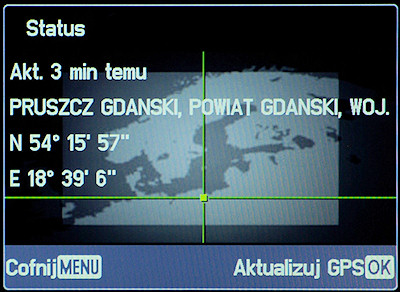 |
The location info you can also get in playback mode - the name of the place a photo was taken will be displayed. It is worth noticing that, along with geographical coordinates, the camera saves also in EXIF data the information about the direction in which the photo was taken, the current pressure, depth or altitude.
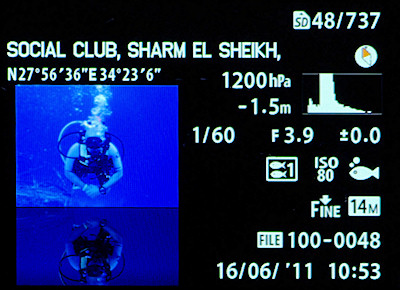 |
The GPS receiver doesn’t update data underwater, though, so the photos will be simply attributed the info concerning your latest dry land position.
Although in this category the Olympus deserves to be praised we would be more happy if the panorama function was more efficient and the GPS was able to follow the incoming data like it is done by the Fujifilm XP30.
Underwater usage
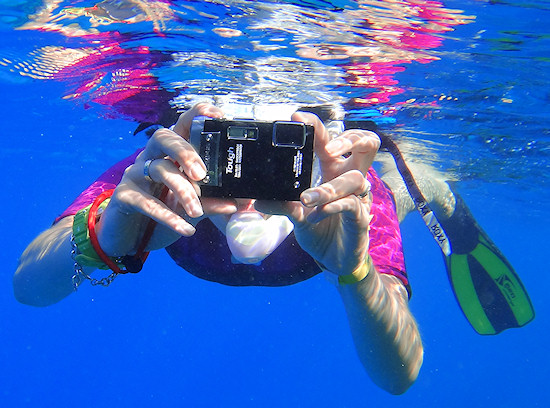 |
As we already mentioned, the Olympus TG-810 was equipped in new, faster image processor. A bit quicker operations of the camera, compared to its older version, confirm that fact. Although we are far from calling it a speed fiend we must admit that taking pictures using the new Tough and navigating the menu is less frustrating.
As we already mentioned the menu we must say that its design doesn’t differ from the standards the Tough 8010 get us used to. We can find bookmarks divided in the same way, including not very correct translations of some items we wrote at large about during the test of the previous model – for example IMAGE QUALITY in the video mode settings in Polish version is defined as SMALL or NORMAL (not exactly the good equivalent of English FINE/NORMAL).
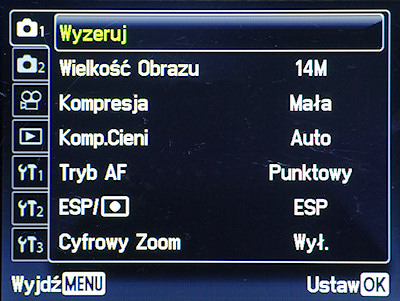 |
Also the quick menu with settings of parameters is similar to that of the Tough 8010 but the joystick makes the navigating definitely easier. The whole process is quite stubborn and slow but not to such an extend as in the previous model and you don’t have to press the MENU button to get there, it’s enough you move the joystick in any direction. Switching the camera on takes most of the time, though – you have to wait about 10 seconds before you can take the first photo. The initializing of the video mode and saving a recorded movie is quite swift. We don’t have to wait forever to take next photos, as it was the case in the older model. Also the autofocus speed is nothing to carp about.
The Olympus TG-810 offers four thematic modes which you can use underwater:
- PHOTO – to take pictures on a beach or in a swimming pool,
- WIDE ANGLE 1 – perfect for underwater landscapes,
- WIDE ANGLE 2 – perfect for underwater action photos,
- MACRO – perfect for underwater close-ups of different objects.
As you see the Olympus constructors with obsessive persistence use in their underwater cameras the same unpractical thematic modes. We must be equally stubborn and criticize them once again.
During snorkeling with the TG-810 we noticed one more change, compared to the Tough 8010. The new model features just one white balance setting for underwater photos. Apparently the engineers have already discovered the fact we mentioned in our last-year test – there is no difference in colouring of photos taken at different settings so you can as well forget about them. The fact that you can’t change anything is even profitable - the white balance menu works the slowest of all because during browsing between successive options the camera generates thumbnails with colouring appropriate for a given WB setting. Unfortunately it takes some time.
Traditionally there is a bit of solace to be found - we don’t have to change the thematic mode , forcing our way through the complicated menu, if we want to take a picture immediately after resurfacing – the camera’s underwater mode deals with colour rendering quite well also on dry land.
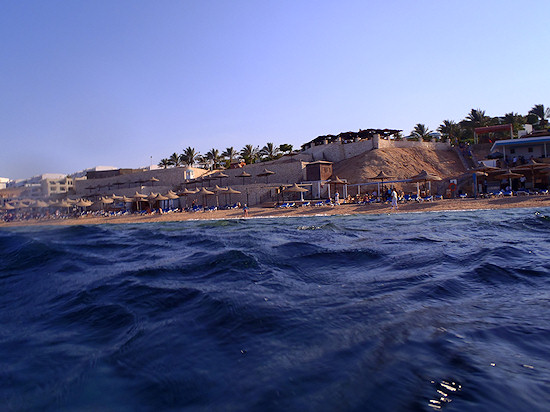 Dry land photo taken in the underwater mode |
In older models we criticized the way the lens was set because we often managed to obscure it accidentally with a finger. In the TG-810 theoretically nothing changed because the place of the lens in the casing is almost identical. In practice we didn’t see any fragment of our finger in the photos taken this time and we are not sure whether an unknown factor caused it or simply we got used to operating underwater Olympus cameras and somehow can manage not being aware of it.
We left the nicest thing to be mentioned at the end – the description of the LCD screen. Using it, no matter whether underwater or on dry land, against bright light or in darkness, is a real pleasure. The image displayed is always clear and crisp, with the right contrast; the resolution of 920K dots only deepens our positive feelings. Compared to its rivals the screen of the TG-810 is huge. For instance in the case of the Pentax WG-1 the 16:9 proportions make the preview of the 4:3 frame really 4.6 x 3.4, not occupying the whole surface of the monitor. In the Olympus the same image is 6.2x4.5 cm - really much bigger; if you take into account the fact that underwater objects appear bigger by a certain coefficient the difference becomes even clearer. The decision to use a big, high resolution monitor was definitely to the tested Olympus’s advantage.
Summing up this part you can boldly state that the engineers did a good job here and improved a lot of features compared to the older model. It doesn’t change the fact that there is still a lot to be done to achieve perfection.
Quality of underwater pictures and videos
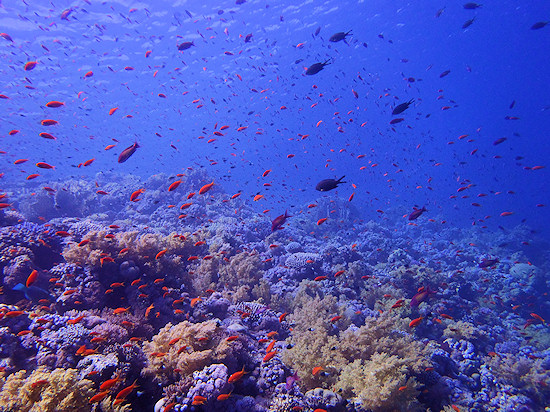 |
Looking at the pictures taken with the Olympus TG-810 you can clearly notice that the constructors decided to improve the colouring of underwater photography. In the case of the older model we complained about too gloom, navy blue-dominated colours; the performance of the tested model looks definitely better. The photographs’ exposure is correct and the colour rendering is definitely on a much higher level. However, getting rid of the blue dominant was not without consequences. The engineers tried to strengthen the purple hue which unfortunately appears quite often in the pictures from Olympus. It happens in the most of cases when the lens is directed toward the source of light. Once again the constructors should be praised but they haven’t reached a perfection yet. Although the colour rendition is on an average level, the autofocus fortunately is very efficient – we didn’t have any problem with finding sharp pictures for the photo gallery, published at the end of this chapter.
The work of new white balance algorithms is even more pronounced when it comes to photos taken at great depths, where finally we can see some colours. It is obvious, though that they are a bit forced by introducing the purple component. Although the effect is much better than in the case of the older model, Panasonic cameras fare certainly much better here.
The colouring of videos is the same – the hues are similar to natural ones but sometimes a purple cast makes itself felt. You can record movies in the maximum HD resolution of 1280×720 pix at 30 fps using the MPEG-4 AVC/H.264 coding. During the recording you can continously change the focal length. Detail rendering in movies is on a decent level but, unfortunately the final effect is spoilt by the continuous autofocus - it constantly gets lost even in not very dynamic scenes.
When we dive with the Olympus in a lake, descending to a depth of 5-7 m, where the visibility doesn’t exceed 2-3 m and the amount of light is noticeably restricted, the autofocus works correctly. Of course the camera’s performance is worse than in the crystal-clear Egyptian waters but the deterioration is not very significant and it can be explained by worse lighting conditions. The colouring of pictures, taken in green waters, is decent although you can still notice a slight green dominant in them.
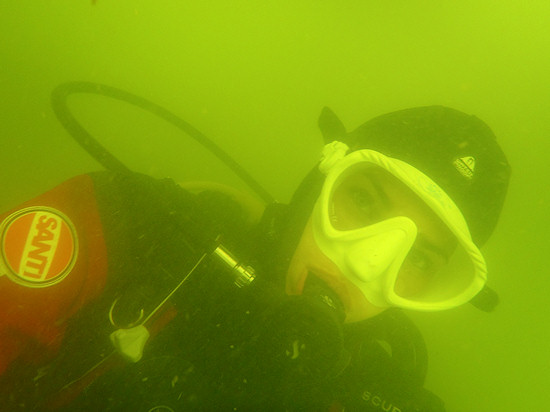 A photo taken in a lake at a depth of about 6 m with visibility of 2-3 m. Click to enlarge. |
Summary
Like it was done before, we start our summary by presenting a list of pros and cons of the tested camera:
-
Pros:
- durable and solid casing,
- swift changing between video and photo modes,
- decent detail rendering in movies,
- fast and accurate autofocus in photo mode,
- precise manometer with depth gauge,
- an alert about diving at too great depth,
- functional GPS module,
- big comfortable cover protecting the memory card, battery and ports,
- shockproof to falls of up to 2m,
- pressure-proof up to 100 kg ,
- big high definition LCD screen,
- clear display unit, legible even underwater or against bright sunlight,
- LCD screen resistant to scratches,
- stiff LCD screen protecting window, resistant to water pressure,
- the right weight of the camera, making it perform well under water,
- the right colouring of photos taken on dry land in the underwater mode,
- comfortable joystick, making the navigation easier.
- housing quite difficult to clean,
- lens hidden too deep and difficult to clean as well,
- lens cover might get stuck,
- forced flash in the „WIDE ANGLE 1” mode makes it impossible to take several photos, one by one, quickly,
- some underwater modes are impractical,
- bad translation of some menu items,
- very slow initializing of the camera,
- weak details rendering in underwater photos,
- pink cast in underwater photos,
- pink cast in underwater videos,
- autofocus problems in the video mode,
- delays during menu navigation.
Cons:
Despite the fact that there is still a lot to be done, the users of the new Tough should be happy – it is definitely less frustrating to operate the new model than the old one. When we add that the photos’ and movies’ quality is satisfactory, the camera features a useful and precise manometer and a functional GPS module, we get a device which purchase should be seriously taken into account before you go on holiday by the water. Especially considering the fact that the producer changed their pricing policy a bit so this camera, price-wise, is now right in the middle of the whole group (the Tough 8010, tested one year ago, was one of the more expensive devices). With the price tag around 1,000 PLN it is really a tempting offer.
Sample underwater videos
| MPEG-4AVC/H.264, 1280×720 pix, 30 fps, 22 s, 23.3 MB |
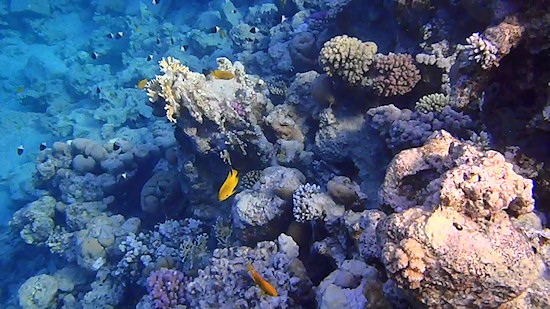 |
| MPEG-4AVC/H.264, 1280×720 pix, 30 fps, 17 s, 17.9 MB |
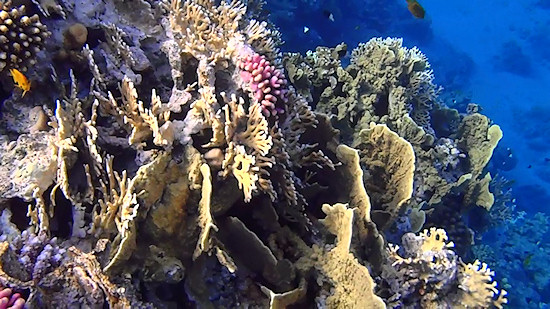 |
| MPEG-4AVC/H.264, 1280×720 pix, 30 fps, 22 s, 23.1 MB, the depth of about 8 m |
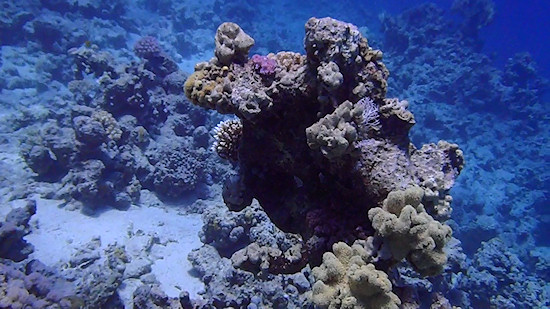 |
Sample underwater shots




